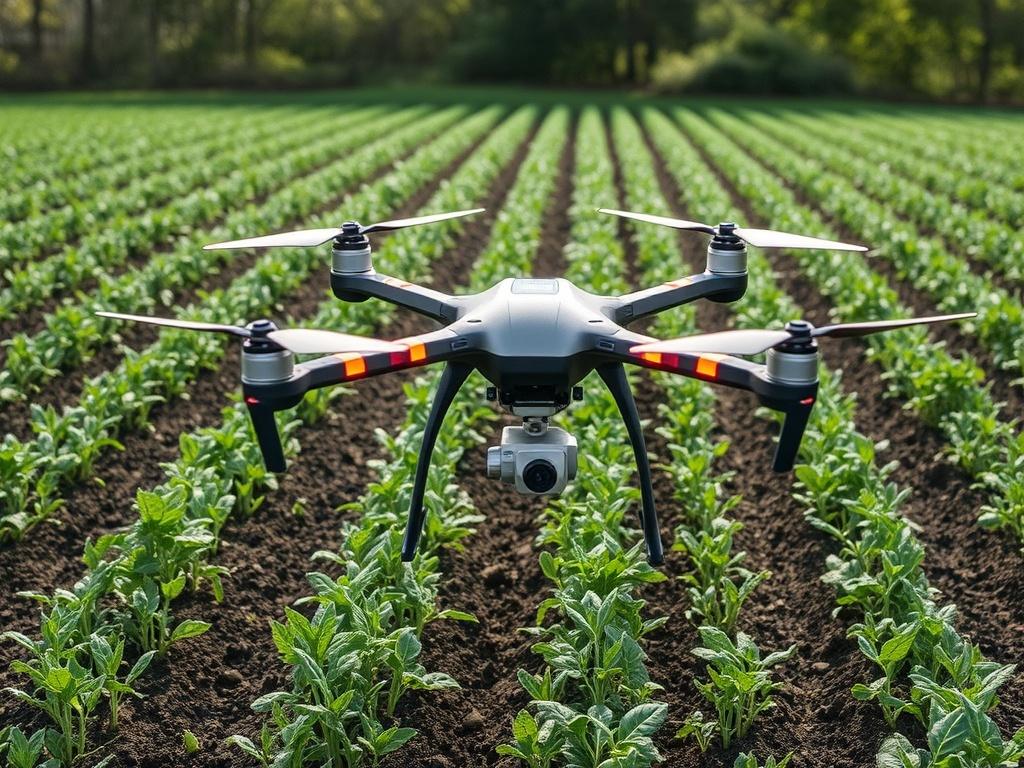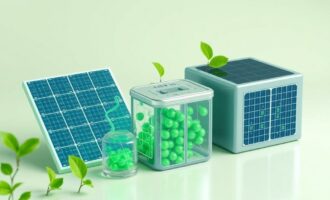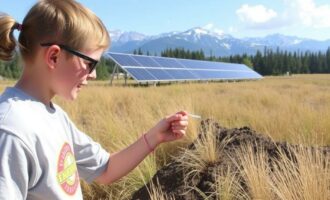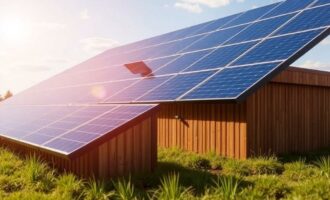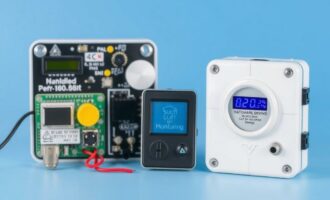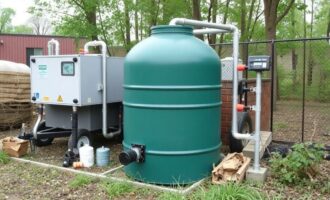- What is precision agriculture and why should you care?
- From manual observation to data-driven decisions
- Drones: the aerial scouts of modern fields
- What drones can do on a farm
- Types of drones and sensors carried
- Sensors in the ground and on plants
- Soil sensors: moisture, nutrients and structure
- Plant health sensors
- Weather stations and microclimate sensors
- Data: the nervous system of precision agriculture
- Data collection and transmission
- Data storage and farm management systems
- Analytics, machine learning and decision support
- From data to action: variable-rate application and automation
- Examples of automated decisions
- Economics: costs, benefits and return on investment
- Factors that influence ROI
- Practical implementation: how a farmer starts
- Challenges and barriers
- Technical and infrastructure hurdles
- Human and organizational challenges
- Regulatory and ethical considerations
- Environmental benefits and sustainability impacts
- Soil health and biodiversity
- Real-world examples and case studies
- Best practices and lessons learned
- Data governance and ethics
- Connectivity solutions for rural areas
- Future directions: AI, robotics and beyond
- Policy, training and the role of institutions
- Supporting smallholders and equity considerations
- Risks, resilience and adaptation
- Practical checklist for resilience
- How to evaluate and choose vendors
- Measuring success: metrics and indicators
- Common misconceptions
- Practical example workflow: a week in a precision farm
- Final thoughts on adoption and scale
- Conclusion
Precision agriculture sounds like a futuristic phrase, but it is already reshaping farms today. Imagine a farmer walking across a field not to inspect every plant by eye, but to check a digital map that highlights exactly where water, fertilizer or attention is needed. Picture drones hovering above, capturing images that reveal subtle signs of stress in crops, and tiny sensors in the soil quietly reporting moisture and nutrient levels to a smartphone. That combination of machines, sensors and data is what we call precision agriculture — a pragmatic, data-driven approach that helps farmers produce more with less. In this article, we will explore the technologies that make precision agriculture possible, why it matters, how it works in practice, and where it might take us next.
What is precision agriculture and why should you care?
Precision agriculture, sometimes called precision farming, uses technology to observe, measure and respond to variability in fields. Rather than treating a whole field as a uniform block, precision agriculture recognizes that soil, pests, disease pressure and microclimates can change from one part of a field to another. By tailoring inputs (water, fertilizer, pesticides) to the real needs of each zone, farmers can increase yields, reduce costs and limit environmental impacts.
If you’re a farmer, precision agriculture can boost profitability and reduce waste. If you’re a consumer, it can mean more sustainable food production with smaller environmental footprints. If you’re a policymaker or investor, it offers a pathway to meet global food demand while protecting soil, water and biodiversity. All of this makes precision agriculture a compelling subject for anyone interested in the future of food.
From manual observation to data-driven decisions
Historically, farmers made decisions based on experience, visual inspection and simple tools. Precision agriculture adds layers of measurement and automation. Instead of relying solely on what you see from the tractor seat, you can use satellites, drones, in-field sensors and machine-learning analysis to make informed, timely decisions. The result is not about replacing farmers, but empowering them with better information — the human eye and judgment remain central, guided by richer data.
Drones: the aerial scouts of modern fields
Drones have become emblematic of precision agriculture. Small, relatively affordable, and increasingly easy to operate, they offer a flexible platform for remote sensing. Farmers use drones for scouting, mapping, monitoring crop health, detecting weeds, and even applying inputs in some advanced setups.
What drones can do on a farm
Drones provide a bird’s-eye view that’s simply impossible to get from the ground. Common uses include:
- Visual scouting: high-resolution images to spot patches of stress, pest outbreaks or irrigation problems.
- Multispectral imaging: capturing light outside the visible range to highlight plant health indicators like chlorophyll content.
- Thermal imaging: detecting water stress or irrigation system failures by measuring surface temperature differences.
- 3D mapping and elevation models: useful for drainage planning and soil erosion assessment.
- Targeted application: in some regions, drones are used to spray small areas, particularly where access is difficult.
Drones are not a silver bullet — they complement other data sources. But for rapid, repeatable, cost-effective monitoring, they’re hard to beat.
Types of drones and sensors carried
Not all drones are equal. Fixed-wing drones cover large areas quickly and are efficient for mapping big fields, while multirotor drones hover and maneuver well for close inspection and targeted tasks. Sensor payloads vary too:
- RGB cameras: standard color images, great for scouting and visual records.
- Multispectral sensors: capture multiple bands (e.g., red, green, blue, near-infrared) used to compute vegetation indices like NDVI.
- Hyperspectral sensors: capture dozens to hundreds of narrow bands for detailed plant and soil characterization.
- Thermal cameras: measure temperature differences to reveal water stress or equipment faults.
- Lidar: creates precise 3D models for terrain and canopy structure analysis.
Sensors in the ground and on plants
If drones provide the aerial perspective, ground sensors provide the intimate, constant view. Placing measurement devices directly in soil or on plants yields time-series data that tells a more detailed story than a single snapshot. The right sensor network bridges the gap between remote observations and actionable management.
Soil sensors: moisture, nutrients and structure
Soil sensors measure variables like moisture, temperature, electrical conductivity, and sometimes specific nutrients (nitrate, ammonium). Real-time soil moisture informs irrigation scheduling; soil electrical conductivity maps can suggest variations in texture or salinity that affect fertility. Key categories include:
- Capacitive or resistive moisture probes: common and relatively low-cost, giving volumetric water content.
- Time-domain reflectometry (TDR): more accurate and stable but pricier, often used in research or high-value crops.
- Ion-selective sensors: detect specific nutrients but are sensitive and require careful calibration.
Plant health sensors
Sensors can be attached to plants or installed near rows to measure leaf temperature, sap flow, or reflectance properties. These indicators help detect stress before symptoms are visible to the eye. Continuous plant-level monitoring is especially useful in high-value or controlled-environment crops like orchards and greenhouses.
Weather stations and microclimate sensors
Microclimate has a huge influence on pest development, disease pressure and water needs. On-farm weather stations measure rainfall, wind, temperature, humidity, and solar radiation. When combined with disease models and phenology calendars, weather data helps optimize spray timing and predict risk.
Data: the nervous system of precision agriculture
Data is the glue that connects drones and sensors to decisions. But raw data alone isn’t enough — it must be transmitted, stored, processed and interpreted. That pipeline turns sensor readings into maps, alerts and prescriptions that farmers can act on.
Data collection and transmission
Collecting data happens at different frequencies: drones might survey a field weekly, soil sensors report hourly, and weather stations update every few minutes. Connectivity is a practical challenge on many farms. Common transmission technologies include:
- Wi-Fi and Bluetooth: short-range, used for local connectivity between devices and a gateway.
- LoRa/LoRaWAN: long-range, low-power networks ideal for sparse sensor deployments across large fields.
- Cellular (3G/4G/5G, NB-IoT): broad coverage where available, suitable for high-bandwidth devices like drones or video streaming.
- Satellite: used where terrestrial networks are absent; latency and cost are considerations.
Data storage and farm management systems
Once gathered, data needs a place to live. On-farm gateways can store and pre-process data locally, while cloud platforms provide scalable storage and heavy computation. Farm Management Information Systems (FMIS) or Farm Management Software (FMS) aggregate data from multiple sources and present it via dashboards, maps and reports. These platforms often integrate with machinery (tractors, planters, sprayers) to send “prescription maps” — spatially variable application plans that match inputs to soil and crop needs.
Analytics, machine learning and decision support
Turning data into decisions is the most value-adding step. Analytics range from simple thresholds (e.g., irrigation when soil moisture falls below X) to advanced machine learning models that predict disease outbreaks or estimate yields. Key analytical approaches include:
- Vegetation indices (NDVI, EVI): derived from spectral data to indicate plant status.
- Time-series analysis: detecting trends and anomalies over time.
- Predictive models: using historical and current data to forecast outcomes like yield or pest pressure.
- Prescriptive analytics: recommending concrete actions, such as variable-rate fertilizer maps.
Artificial intelligence helps identify subtle patterns, automate image analysis from drones and integrate many data streams in near real-time.
From data to action: variable-rate application and automation
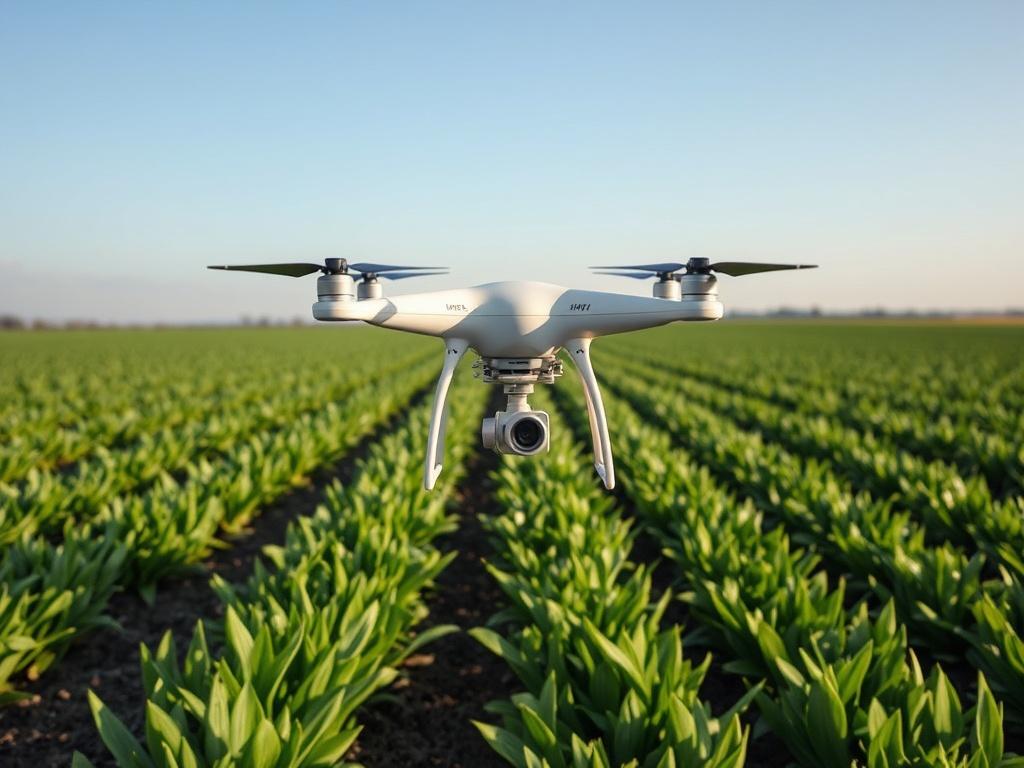
A core promise of precision agriculture is applying the right input at the right place and time. Variable-rate technology (VRT) allows equipment to vary seed, fertilizer or pesticide delivery across a field following a prescription map. This can be done by:
- Section control: turning off sections of a boom to avoid over-application at headlands or overlaps.
- Variable-rate controllers: using sensors and prescriptions to continuously modulate application rates.
- Autonomous vehicles and robots: performing tasks without a driver, particularly useful in small-scale or labor-constrained operations.
When linked to accurate maps and sensors, VRT increases input efficiency and reduces environmental impacts.
Examples of automated decisions
Automation ranges from simple alerts to fully automatic corrections:
- Irrigation controllers adjusting run times based on soil moisture and weather forecasts.
- Sprayers applying herbicide only where weed density surpasses a threshold detected by cameras.
- Harvesters adjusting combine settings based on yield maps and crop moisture sensors in real-time.
Economics: costs, benefits and return on investment
One of the biggest questions for farmers is whether precision agriculture pays. The economics depend on farm size, crop value, local prices and implementation choices. Some technologies — like a basic soil moisture probe or a consumer-level drone — are relatively low-cost and show quick returns. Large-scale investments, such as full sensor networks or advanced VRT machinery, require higher capital but can produce substantial gains over time.
Factors that influence ROI
Return on investment depends on:
- Crop value: high-value crops (horticulture, specialty crops) often see faster payback.
- Field variability: highly variable fields benefit more from targeted inputs.
- Adoption strategy: phased, modular adoption reduces risk and helps build skills.
- Operational capacity: having people who can interpret data and act on recommendations is crucial.
Many advisory services recommend starting small: pilot a sensor or drone program on a single field, learn the workflow, and scale gradually.
Practical implementation: how a farmer starts
Implementing precision agriculture is as much a social and managerial task as a technical one. A practical, phased approach helps:
- Define objectives: reduce fertilizer costs, improve irrigation efficiency, or increase yield stability?
- Assess baseline: map field variability with soil tests and simple surveys.
- Select technologies with clear returns: moisture probes, a scouting drone, or yield mapping equipment.
- Plan connectivity and data flow: how will sensors talk to the cloud, and who will access data?
- Train staff: ensure operators can use hardware and interpret outputs.
- Monitor and adapt: iterate based on observed results and refine prescriptions.
Starting with clear goals reduces the temptation to buy technology for its own sake.
Challenges and barriers
Despite the promise, precision agriculture faces real obstacles. These include technology costs, fragmented data standards, connectivity gaps in rural areas, and the skill gap among farmers and advisors. Privacy and data ownership are also pressing concerns: who owns the data from sensors in a third-party cloud, and how can that data be used?
Technical and infrastructure hurdles
Many farms lack reliable cellular or broadband coverage, making real-time data transfer difficult. Sensor calibration and maintenance require ongoing attention. Interoperability between different vendors’ hardware and software remains an issue, though standards bodies and industry alliances are making progress.
Human and organizational challenges
Data is only useful if people can interpret and act on it. Smaller operations may lack the personnel to manage technology. Education, extension services and cooperatives can help bridge the knowledge gap. Trust is another factor: farmers need to trust the models and recommendations produced by automated systems.
Regulatory and ethical considerations
Aerial drone operations are subject to aviation regulations, which vary by country. Chemical application via drones may be restricted. Data governance raises questions about consent, commercialization of farm data, and competitive use. Building transparent data policies and local control can help alleviate concerns.
Environmental benefits and sustainability impacts
Precision agriculture has the potential to reduce the environmental footprint of food production. By applying fertilizers and pesticides only where needed, we can reduce runoff, greenhouse gas emissions and chemical exposure. Better irrigation management conserves water and reduces energy use.
Soil health and biodiversity
Targeted practices can support soil health by avoiding blanket over-application of nutrients and encouraging cover cropping in zones that need it. Precision tools can also reduce tillage in sensitive areas, improving biodiversity over time.
Real-world examples and case studies
Real farms demonstrate the power of precision agriculture. Below is a table summarizing a few illustrative cases that highlight diverse applications and outcomes.
| Farm/Region | Technology Used | Primary Benefit | Result |
|---|---|---|---|
| Midwestern grain farm (USA) | Yield mapping + variable-rate nitrogen | Reduced fertilizer costs and improved nitrogen use efficiency | 10–15% reduction in N use with stable yields |
| Vineyard (France) | Multispectral drone surveys + soil moisture sensors | Targeted irrigation and disease monitoring | More uniform grape quality, reduced water use by 20% |
| Fruit orchard (Australia) | Thermal imaging + microclimate stations | Frost risk mapping and precision frost mitigation | Reduced freeze damage in vulnerable blocks |
| Small vegetable farm (Kenya) | Low-cost sensor network + SMS advisories | Accessible decision support for smallholders | Improved yields and better pest timing information |
Best practices and lessons learned
Successful precision agriculture projects share some common elements:
- Start with clear, measurable goals and pilot projects.
- Invest in training and local support, not just hardware.
- Choose interoperable systems or platforms that can integrate multiple data sources.
- Use phased investments to manage financial risk and build expertise.
- Keep the farmer in the loop: systems should enhance, not replace, farmer judgement.
These practices minimize disappointment and maximize the benefits of new technologies.
Data governance and ethics
Adopt clear policies on who owns data, how it can be shared and how long it’s stored. Farmers should have control over their data and be able to consent to commercial uses. Transparency about algorithms and decision logic also builds trust.
Connectivity solutions for rural areas
Connectivity is often the linchpin of modern precision agriculture. Solutions include:
- Community networks and local gateways that store data offline and sync when connectivity is available.
- Long-range LPWAN (LoRaWAN) deployments to collect data from widely spaced sensors with low power consumption.
- Hybrid approaches using cellular where available and satellite fallback where it’s not.
In many regions, a mix of technologies provides the most resilient and cost-effective solution.
Future directions: AI, robotics and beyond
The trajectory of precision agriculture points to even deeper automation and intelligence. Key trends include:
- Advanced AI models that fuse satellite, drone and in-field sensor data for predictive management.
- Swarm robotics: multiple small robots collaborating for weeding, monitoring and selective harvesting.
- Precision breeding and phenotyping: integrating sensor data to speed genetic improvement.
- Digital twins of farms: virtual replicas that simulate outcomes of management choices before implementation.
As sensors get cheaper and models get smarter, capabilities that once seemed like science fiction will become routine.
Policy, training and the role of institutions
Scaling precision agriculture requires public and private collaboration. Extension services, universities and farmer cooperatives play vital roles in training and translating research into practice. Policy can accelerate adoption by funding rural broadband, supporting pilot projects and creating data-sharing frameworks that protect farmers while encouraging innovation.
Supporting smallholders and equity considerations
Precision agriculture often starts in large, well-capitalized farms, but smallholders — who constitute a majority of the world’s farms in many regions — can also benefit. Low-cost sensors, shared services, cooperative models and mobile-based advisories can bring precision practices to smaller operations. Ensuring equitable access to technology and training is essential for broad-based benefits.
Risks, resilience and adaptation
Reliance on technology creates dependencies that must be managed. Systems should be resilient to power losses, connectivity failures and cyber risks. Backup plans, local data storage and periodic manual checks help maintain operations when tech fails. Furthermore, precision agriculture is a tool for adaptation: by making management more responsive to local conditions, it helps farms cope with climate variability and extreme events.
Practical checklist for resilience
- Maintain local data backups and offline map copies.
- Train staff in manual monitoring techniques as a fallback.
- Choose sensors and controllers with robust warranties and local support.
- Use encryption and secure access controls for data and machine interfaces.
How to evaluate and choose vendors
With many vendors offering overlapping solutions, farmers need criteria to choose. Consider:
- Interoperability: can the vendor’s system share data with other platforms?
- Support and training: is local support available, and is training included?
- Data ownership: what are the terms for data storage, sharing and resale?
- Reputation and case studies: do they have proven deployments in similar contexts?
- Total cost of ownership: include hardware, subscriptions, maintenance and required upgrades.
Measuring success: metrics and indicators
To know whether precision agriculture is working, track metrics aligned with goals:
- Economic: input cost savings, return on investment, yield stability.
- Environmental: reductions in fertilizer use, water saved, lower greenhouse gas emissions.
- Operational: time saved in scouting and decision-making, number of interventions avoided.
- Social: improved worker safety, increased knowledge and skill levels among staff.
Common misconceptions
There are a few myths to watch out for:
- Myth: Precision agriculture is only for big farms. Reality: many tools scale to smallholders and high-value crops.
- Myth: Technology replaces farmers. Reality: it augments farmer decision-making and often requires more skilled judgment.
- Myth: You must adopt everything at once. Reality: phased, modular adoption is safer and more effective.
Practical example workflow: a week in a precision farm
Let’s walk through a practical, hypothetical week:
- Monday: Drone flight maps the field after a storm; thermal images reveal dry patches and pooled water in low spots.
- Tuesday: Soil sensor network shows declining moisture in part of the field; irrigation controller schedules targeted watering overnight using a prescription generated from sensor thresholds.
- Wednesday: Multispectral drone survey shows localized chlorosis; the analytics platform suggests a soil test in that zone.
- Thursday: Soil tests confirm low available nitrogen in the mapped zone; a variable-rate fertilizer map is generated for the next pass.
- Friday: Sprayer with VRT applies fertilizer using the prescription; the platform logs inputs for traceability and subsidy reporting.
- Weekend: Weather forecast predicts rain; the system recommends delaying further applications to avoid runoff risk.
This cycle demonstrates how data, sensors, drones and machinery combine to make timely, precise decisions.
Final thoughts on adoption and scale
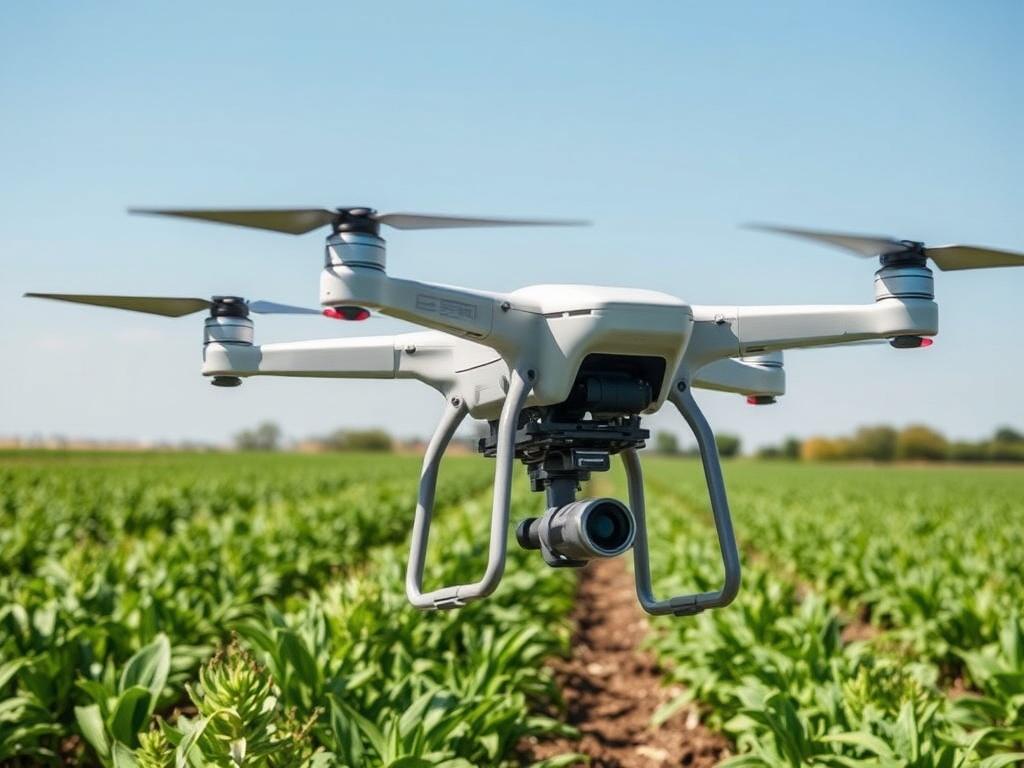
Precision agriculture is not a single product but a toolbox. Its value comes from how tools are combined, how data flows are organized, and how people interpret and act on insights. For many farmers, the path forward is gradual: adopt one sensor or a drone, learn the data workflow, measure results, and expand what works. For policymakers and service providers, the task is to lower barriers — through connectivity, training and fair data practices — so the benefits of precision agriculture reach more farms and communities.
Conclusion
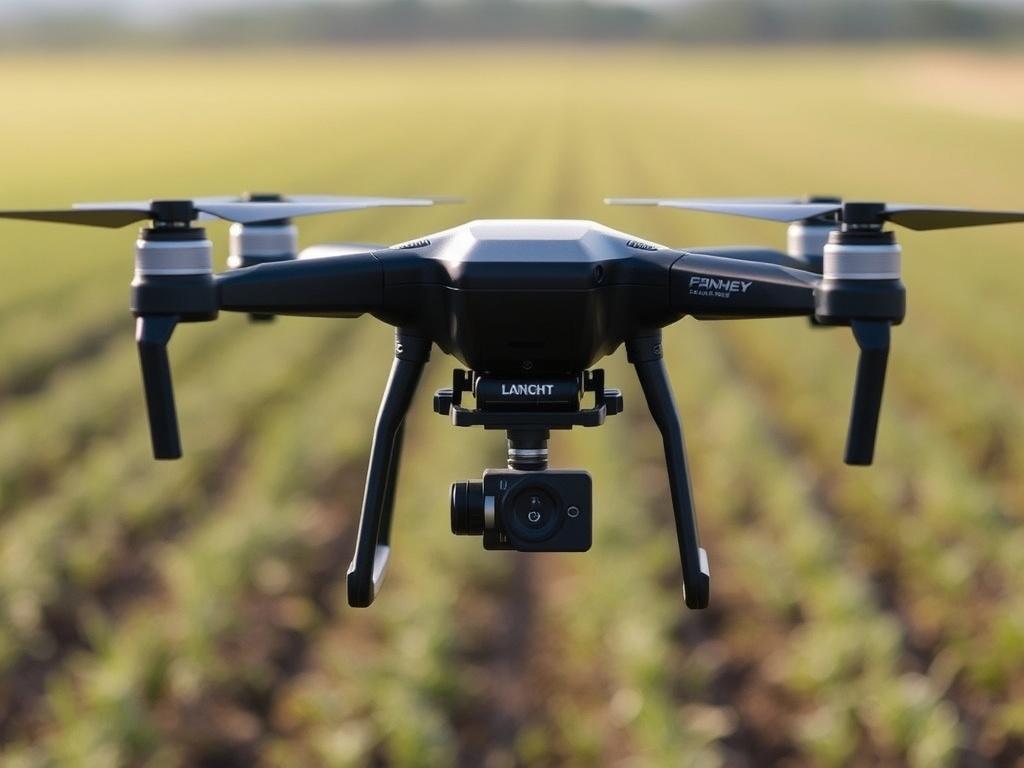
Precision agriculture—anchored by drones, sensors and data—offers a practical path to produce more with less, boosting farm profitability while reducing environmental impacts; its successful adoption depends on sensible, phased investment, reliable connectivity, clear data governance, and human expertise to turn information into wise action, and though challenges remain in cost, interoperability, and skills, the steady march of cheaper sensors, smarter analytics and supportive policies makes this an achievable and necessary evolution for resilient, sustainable food systems.
Как вам статья?

